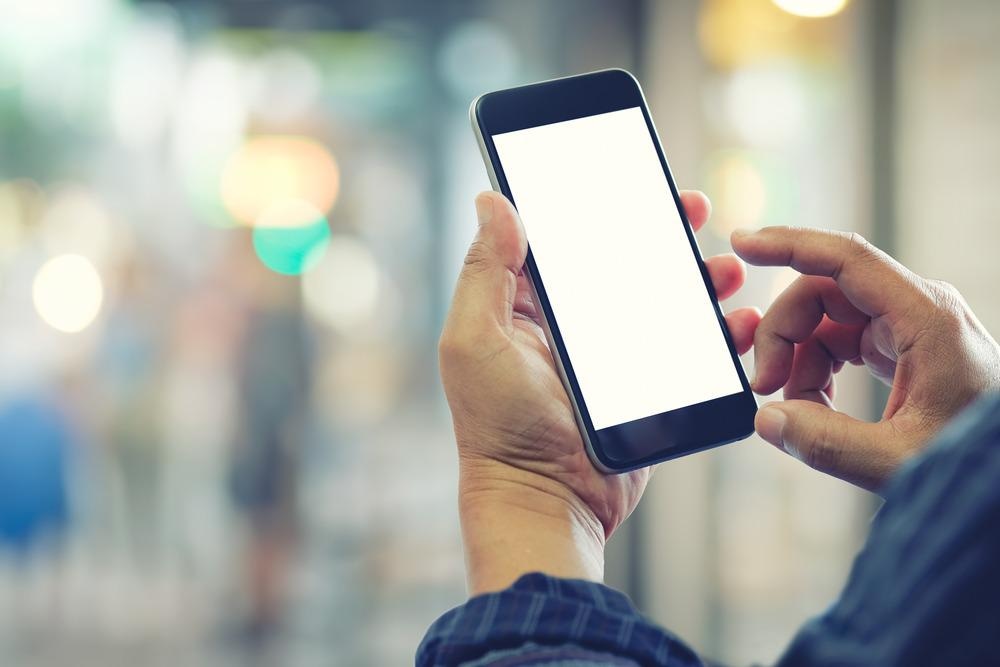
Image Credit: BongkarnGraphic/Shutterstock.com
Identifying wear level is an important objective in many engineering and industrial settings, as this information can be used to boost efficiency, minimize costs, and avoid accidents. Ideally, detecting surface wear should be carried out with a cost-effective method that is easy to use.
In a new study published by The International Journal of Advanced Manufacturing Technology, researchers described a novel strategy to achieve early wear detection by way of a smartphone and associated application. The study team said their system could provide real-time metrology data of a functioning mechanical system and sending that data over the internet. The web-based monitoring system uses optical sensing and image processing that are both available in commercial smartphones. The new system detects and presents data without disturbing the mechanical process.
The system tracks the appearance and advancement of wear, facilitating just-in-time alarms regarding critical wear situations. The research team also showed that their system was capable of identifying a potentially catastrophic rupture just before it occurred, which is the primary goal for such a system in most industrial applications.
While scientifically measuring optical signals from smartphones is difficult due to different sensor qualities among various models, smartphone-based sensor technology has become more popular, especially as the amount of embedded smartphone sensors increases.
Structurally, smartphones provide access to quite a few kinds of on-board sensors. A few of these sensors are physically present, while some are based on software. Examples of physical sensors commonly found in smartphones include optical sensors, magnetometers, and temperature sensors, which capture light, orientation, and environmental conditions, respectively. On the other hand, software-based sensors process information from one or more physical sensors to output real-time data, such as rotation or linear acceleration. Generally, smartphone sensors may be classified into three different groups: motion, position, and environmental sensors.
Pre-processing, Processing and Post-Processing
All sensing systems have pre-processing, processing, and post-processing systems, and in a smartphone-based platform, various stages may be done inside or outside the device itself.
The pre-processing stage involves altering raw information produced by smartphone sensors into clean and structured data ahead of a full, thorough analysis. One of the many goals of pre-processing is to even out the raw data and dampen noise. Simply put, there are three kinds of smoothing and filtering techniques: moving-average, low- or high-pass, and band-pass filtering. The most common type is moving-average because it is the simplest concept to grasp and put into practice as there is very minimal setup involved.
Given its straightforwardness, this type of filter is good for some basic tasks, including decreasing random noise while keeping key information intact. Low- or high-pass filters eliminate unwanted areas of signals using a predetermined frequency range. A band-pass filter moves parts of the signals inside a certain assortment of frequencies and removes the other regions of signals that are not in that range.
With regards to smartphone platforms, the pre-processing and finalizing steps are often achieved using two different setups: offline and online. In the offline setup, sensor data is gathered by the device, but pre-processing and processing stages are performed on computers. In online mode, the collection of data, pre-processing, and processing are carried out at the same time by the device. Preferably, a particular smartphone platform needs to be developed to gather, preprocess, and process data using an online mode.
Used to refine processes, post-processing often involves data from many different sources to improve precision and scalability. For instance, results from different users or trials could be integrated to make sampling more reliable and accurate.
Building on a Popular Smartphone Device
The new system is partly based on a popular smartphone-linked device and platform called iSPEX, which uses spectropolarimetry to capture a snapshot of hyperspectral intensity and light polarization.
The iSPEX 2 model is the newest device on this platform that collects spectropolarimetry data by taking pictures after it has been calibrated correctly. The device gathers information on the strength and composition of light at various visible wavelengths to determine the chemical concentrations of materials captured by the camera. For example, in a natural body of water, iSPEX can capture information on levels of chlorophyll-a and dissolved organic matter.
The iSPEX2 unit has two side-by-side slits that allow light to enter from just one direction. This light is modulated by a group of optics that translate the incoming optical information into light and dark stripes. A grating is used to spray the light into the lens of the smartphone camera as two rainbows, one for each slit, with opposing dark and light stripes. The smartphone camera then reads this information so it can be processed.
As a low-cost sensing unit, iSPEX 2 has been a cost-effective way to expand scientific monitoring into remote areas or inconvenient times. The platform has been deployed both on the ground and in the air to detect aerosol thickness with high precision.
Resources and Further Reading
Diamanti, E. et al. Use of smartphones as optical metrology tools for surface wear detection. The International Journal of Advanced Manufacturing Technology. [Online] Available at: https://link.springer.com/article/10.1007/s00170-021-06840-x
Monocle. Monocle iSPEX2. [Online] Available at: https://monocle-h2020.eu/Sensors_and_services/iSPEX_2
Sattar, S. et al. Road Surface Monitoring Using Smartphone Sensors: A Review. Sensors. [Online] Available at: https://www.mdpi.com/1424-8220/18/11/3845/htm
Burggraff, O. A universal smartphone add-on for portable spectroscopy and polarimetry: iSPEX 2. Proc. SPIE 11389, Micro- and Nanotechnology Sensors, Systems, and Applications XII. [Online] Available at https://www.spiedigitallibrary.org/conference-proceedings-of-spie
Disclaimer: The views expressed here are those of the author expressed in their private capacity and do not necessarily represent the views of AZoM.com Limited T/A AZoNetwork the owner and operator of this website. This disclaimer forms part of the Terms and conditions of use of this website.